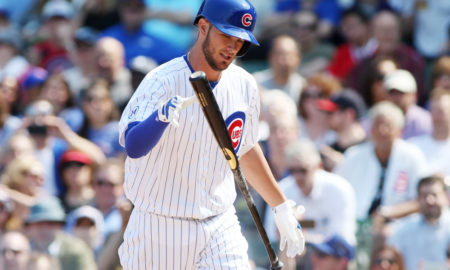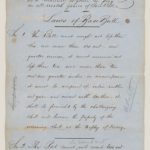Exploiting Fantasy Recency Bias with Future Projections
 In sports, we must always look forward. We’re in a particularly dangerous stage in the baseball season right now: enough games have been played where we start to overweight year-to-date (YTD) production, thinking that what a player has done so far is indicative of what he’ll do in the future. Research on this topic suggests that is a dangerous—and frankly, false—assumption. A classic case of recency bias.
In sports, we must always look forward. We’re in a particularly dangerous stage in the baseball season right now: enough games have been played where we start to overweight year-to-date (YTD) production, thinking that what a player has done so far is indicative of what he’ll do in the future. Research on this topic suggests that is a dangerous—and frankly, false—assumption. A classic case of recency bias.
In fact, research by Mitchell Lichtman, co-author of the The Book: Playing the Percentages in Baseball, tells us that rest-of-season (ROS) projections are more predictive of future performance than current performance in nearly every single way (as measured by wOBA)—whether we’re one month or five months into the season. Put another way, if you were to project how a player were to perform on the last day of the season, you’d still be better off using ROS projections than YTD performance.
Of course, this isn’t a novel concept. Shortly after I mentioned this pending piece on the recent Roto Pope podcast, The Athletic’s Eno Sarris conducted a similar exercise—identifying players with the biggest discrepancies between their YTD actual, YTD expected and ROS projected OPS. Sarris also highlighted a key update to Lichtman’s 2014 study: the advent of Statcast data, which we can use to better understand “expected” production and unearth new insights, such as potential injuries through lower exit velocity readings.
We also did a similar exercise on these very pages just a couple months ago. Looking back, you can see the value in looking forward. For instance, if you had invested in the top recommendation at the time, Matt Carpenter, you’d have acquired a player who recently homered in six straight games and moved up 400-plus spots in the rankings since then (from 454 at time of writing to nearly top 30 today).
After the research in this piece, I stand by each of those previous recommendations to differing degrees and, depending on acquisition cost, would still recommend investing—Carpenter, Carlos Santana, Yadier Molina, Ryan Zimmerman and Joey Votto. But the point of this exercise isn’t to regurgitate previous analysis. Instead, let’s highlight some new names—hopefully one of these players provides a 10x-type surge like Carpenter.
Methodology
First, let’s clarify the difference in approach for this analysis. The objective of this analysis is to identify hitters with the biggest discrepancies between YTD performance and ROS projection—ideally with supporting evidence provided by expected stats. To do this, I used the FanGraphs Auction Calculator to determine hitters’ ROS value across each of the available projection systems—Steamer, ZiPS, Depth Charts and THE BAT.
I then calculated the median value from the four projection systems for each player, ostensibly creating a ROS ranking. To understand YTD performance, I re-visited the Auction Calculator and ran a report for YTD values. After removing less-interesting players—as defined by a median ROS rank of less than 100—I was left with a tidy list of 100 players.
Let’s highlight a few of the more interesting cases below, as judged by a relatively large discrepancy between their YTD and ROS rank. They’re projected to be much better than they have been thus far. According to Lichtman’s research, they “should” play much closer to their projection moving forward:
Nelson Cruz
YTD Rank: 150 | ROS Proj. Rank: 32
Cruz has been a divisive player by production calculators, ranking anywhere from 53rd among hitters (ESPN) to 150th (FanGraphs)—both figures deflated by a freak ankle injury that forced him to the DL and a relatively slow start. Yet, all he keeps doing is hitting. He is currently in the top 10 among max exit velocity (EV), average EV and percentage of balls hit 95+ MPH, with a .289/.378/.539 “expected” triple slash, per xStats.org. Projections see him as the 32nd best hitter moving forward, a bettable rank and a price you may not have to pay.
Edwin Encarnacion
YTD Rank: 153 | ROS Proj. Rank: 42
Apparently, projections don’t want to let go of these old sluggers: Cruz and Encarnacion. That might also highlight a market inefficiency to exploit: unsexy names like Cruz and Encarnacion don’t cost full freight. Is he worth buying though? At 35, he’s certainly declining—walks are way down while strikeouts are up. Still, he ranks top 25 in barrels per plate appearance and his expected triple slash of .251/.334/.498 is still plenty tasty. Projections bake in aging curves and E5 should come at a discount.
Kris Bryant
YTD Rank: 105 | ROS Proj. Rank: 16
Sticking with sluggers but moving to the younger end of the spectrum, Kris Bryant has been disappointing for those that drafted him in the first two rounds expecting a superstar performance. A sore shoulder landed him on the DL for the first time in his career. His power is down and exit velocity numbers don’t suggest the power hitter we conclusively thought Bryant was after his 39 homers in 2016. Still, he’s 31% above league average as a hitter and his expected wOBA is 10-15 points within his previous years. His 11 HR to date are disappointing, to be sure, but his expected 15 HR are a lot more interesting. And, assuming his shoulder is okay, projections think he should continue on that expected home run pace, particularly as Wrigley heats up in the summer.
Others Considered
| Player | YTD Rank | ROS Proj. Rank |
| Khris Davis | 131 | 48 |
| Marcell Ozuna | 116 | 37 |
| Anthony Rizzo | 79 | 17 |
Concluding Thoughts
On the whole, players are most likely to perform to their ROS projections rather than their current performance. This thought process may lead to some misses, but the idea is that owners in your league may start to overweight YTD performance and rank. Exploit that recency bias by paying for YTD performance, pocketing the difference between that and their ROS projection.

























